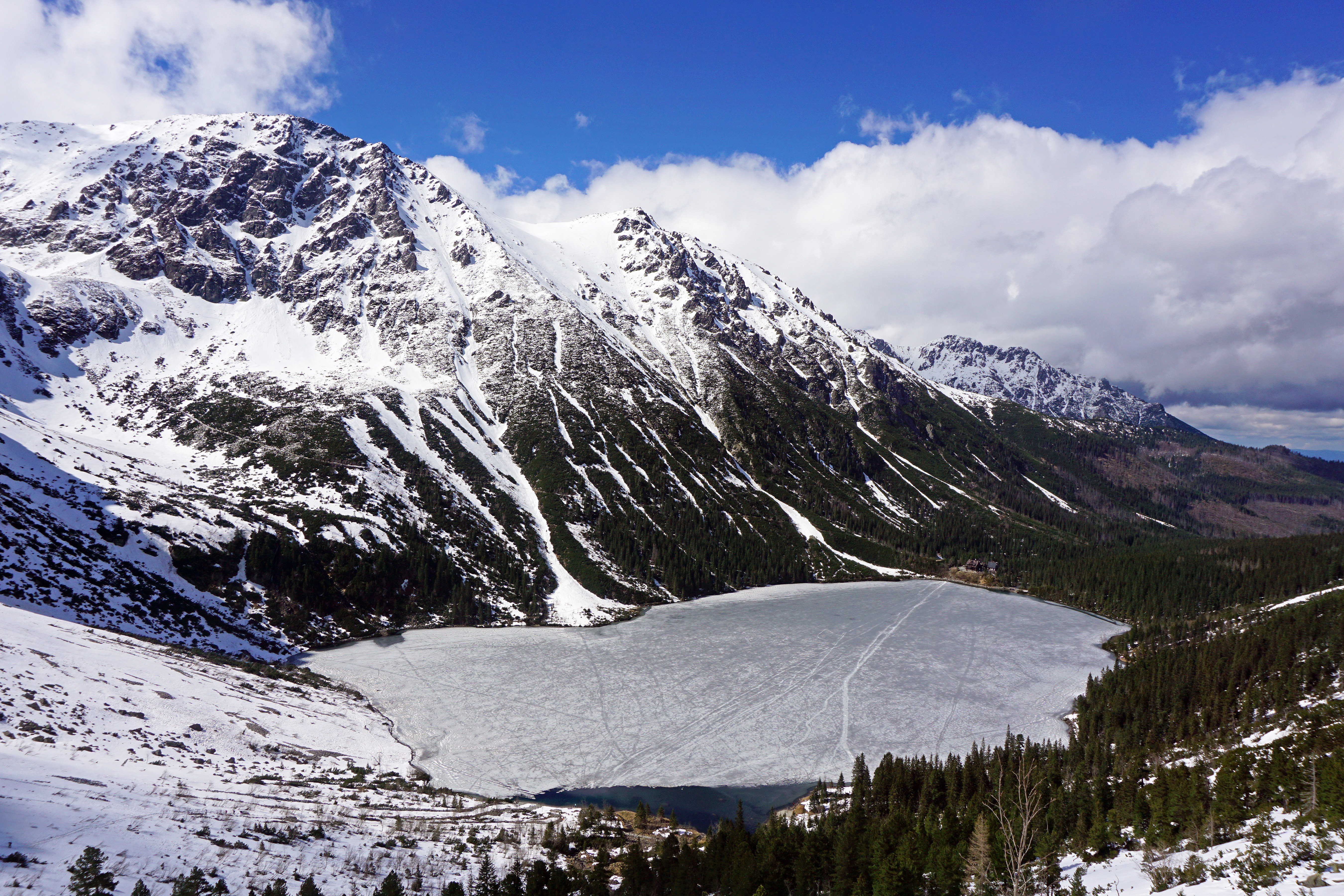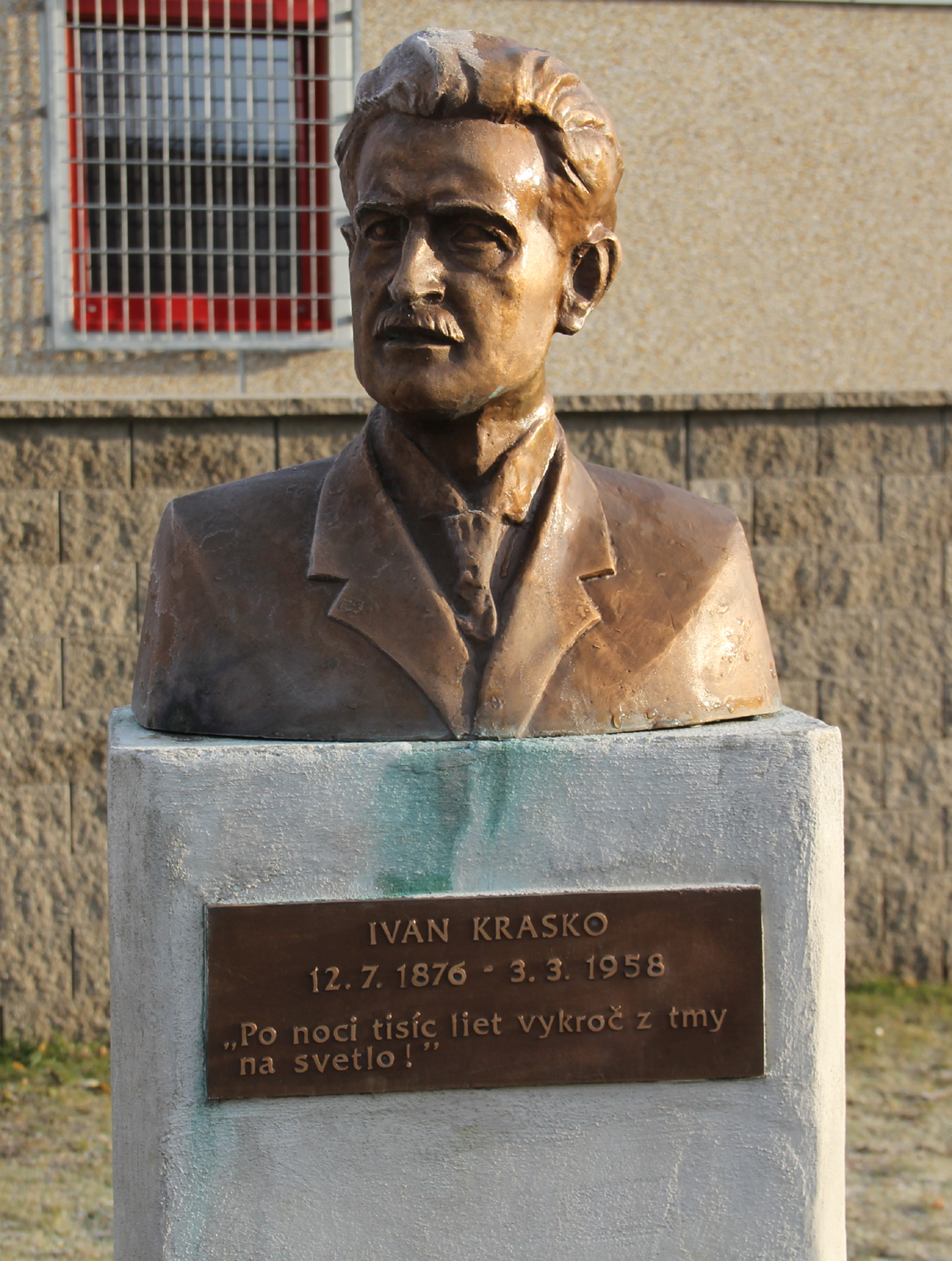|
Pavol Hudák
Pavol Hudák (7 October 1959 in Vranov nad Toplou, Czechoslovakia – 18 January 2011 in Poprad, Slovakia) was a Slovak poet, journalist and publicist. Biography He grew up and studied grammar school in Vyšný Žipov. After high school in the Vranov nad Topľou (1975–1979) he studied at the Pedagogical Faculty, University of Pavol Jozef Šafárik in Prešov (1979–1983). During each year of study, he was rewarded by various prizes at events as ''Akademický Prešov'', ''Wolkrová Polianka'' or other competitions. His first poems were published in periodicals ''New Word for Young'', ''Dotyky'', ''Kultúrny Život'' and others. Between 1983 and 1992 he worked as a teacher in a grammar school, between 1992 and 1995 he worked as local newspaper journalist in Poprad and Vysoké Tatry area, since 1995 as journalist in Nový Čas, Korzár, Pravda, Žurnál or Farmár. Pavol Hudák is one of the most established Slovak authors. Sensitive and remarkable poet with true testimony. Auth ... [...More Info...] [...Related Items...] OR: [Wikipedia] [Google] [Baidu] |
Czechoslovakia
, rue, Чеськословеньско, , yi, טשעכאסלאוואקיי, , common_name = Czechoslovakia , life_span = 1918–19391945–1992 , p1 = Austria-Hungary , image_p1 = , s1 = Czech Republic , flag_s1 = Flag of the Czech Republic.svg , s2 = Slovakia , flag_s2 = Flag of Slovakia.svg , image_flag = Flag of Czechoslovakia.svg , flag = Flag of Czechoslovakia , flag_type = Flag(1920–1992) , flag_border = Flag of Czechoslovakia , image_coat = Middle coat of arms of Czechoslovakia.svg , symbol_type = Middle coat of arms(1918–1938 and 1945–1961) , image_map = Czechoslovakia location map.svg , image_map_caption = Czechoslovakia during the interwar period and the Cold War , national_motto = , anthems = ... [...More Info...] [...Related Items...] OR: [Wikipedia] [Google] [Baidu] |
Poprad
Poprad (; hu, Poprád; german: Deutschendorf) is a city in northern Slovakia at the foot of the High Tatra Mountains, famous for its picturesque historic centre and as a holiday resort. It is the biggest town of the Spiš region and the tenth largest city in Slovakia, with a population of approximately 50,000. The Poprad-Tatry Airport is an international airport located just outside the city. Poprad is also the starting point of the Tatra Electric Railway (known in Slovak as ''Tatranská elektrická železnica''), a set of special narrow-gauge trains (trams) connecting the resorts in the High Tatras with each other and with Poprad. Main line trains link Poprad to other destinations in Slovakia and beyond; in particular, there are through trains running from Poprad to Prague in the Czech Republic. History The territory was since the Migration Period inhabited by Slavic settlers. The first written record dates from March 16, 1256 in the deed of donation of the Hungarian Kin ... [...More Info...] [...Related Items...] OR: [Wikipedia] [Google] [Baidu] |
Vranov Nad Toplou , a municipality and village
{{geodis ...
Vranov may refer to places: Czech Republic * Vranov (Benešov District), a municipality and village in the Central Bohemian Region *Vranov (Brno-Country District), a municipality and village in the South Moravian Region *Vranov (Tachov District), a municipality and village in the Plzeň Region *Vranov nad Dyjí, a market town in the South Moravian Region Slovakia *Vranov nad Topľou Vranov nad Topľou ( Slovak before 1927 and from 1944–1969: ''Vranov''; german: Frö(h)nel / ''Vronau an der Töpl'' (rare); hu, Varannó; rue, Воронів над Топлёв) is a city of approximately 22,500 inhabitants in eastern Sl ... [...More Info...] [...Related Items...] OR: [Wikipedia] [Google] [Baidu] |
Slovakia
Slovakia (; sk, Slovensko ), officially the Slovak Republic ( sk, Slovenská republika, links=no ), is a landlocked country in Central Europe. It is bordered by Poland to the north, Ukraine to the east, Hungary to the south, Austria to the southwest, and the Czech Republic to the northwest. Slovakia's mostly mountainous territory spans about , with a population of over 5.4 million. The capital and largest city is Bratislava, while the second largest city is Košice. The Slavs arrived in the territory of present-day Slovakia in the fifth and sixth centuries. In the seventh century, they played a significant role in the creation of Samo's Empire. In the ninth century, they established the Principality of Nitra, which was later conquered by the Principality of Moravia to establish Great Moravia. In the 10th century, after the dissolution of Great Moravia, the territory was integrated into the Principality of Hungary, which then became the Kingdom of Hungary in 1000. In 1241 a ... [...More Info...] [...Related Items...] OR: [Wikipedia] [Google] [Baidu] |
Slovak Language
Slovak () , is a West Slavic language of the Czech–Slovak group, written in Latin script. It is part of the Indo-European language family, and is one of the Slavic languages, which are part of the larger Balto-Slavic branch. Spoken by approximately 5 million people as a native language, primarily ethnic Slovaks, it serves as the official language of Slovakia and one of the 24 official languages of the European Union. Slovak is closely related to Czech, to the point of mutual intelligibility to a very high degree, as well as Polish. Like other Slavic languages, Slovak is a fusional language with a complex system of morphology and relatively flexible word order. Its vocabulary has been extensively influenced by Latin and German and other Slavic languages. The Czech–Slovak group developed within West Slavic in the high medieval period, and the standardization of Czech and Slovak within the Czech–Slovak dialect continuum emerged in the early modern period. In the later mi ... [...More Info...] [...Related Items...] OR: [Wikipedia] [Google] [Baidu] |
Vranov Nad Topľou
Vranov nad Topľou ( Slovak before 1927 and from 1944–1969: ''Vranov''; german: Frö(h)nel / ''Vronau an der Töpl'' (rare); hu, Varannó; rue, Воронів над Топлёв) is a city of approximately 22,500 inhabitants in eastern Slovakia, situated near Košice and Prešov, and between the Topľa River and the Ondava River. Parts: Vranov nad Topľou (proper); Čemerné; Lomnica Etymology The name is derived from a Slovak word ''vrana'' (crow) with a possessive suffix ''-ov''. In Latin medieval record, the settlement is often called ''Varanno'' (the Hungarized form), but also ''Wrano'', ''Varanow'' or rarely ''Varanovia'' (the Latinized form). Location Vranov nad Toplou occupies the northwest bulge of the Eastern Slovak Lowland (Východoslovenská nížina) in the upper part of the region called Zemplín between the rivers Topľa and Ondava. History The earliest evidences of the human presence in the area of today's Vranov dates back to Paleolithic Era. Several ... [...More Info...] [...Related Items...] OR: [Wikipedia] [Google] [Baidu] |
University Of Pavol Jozef Šafárik
A university () is an institution of higher (or tertiary) education and research which awards academic degrees in several academic disciplines. Universities typically offer both undergraduate and postgraduate programs. In the United States, the designation is reserved for colleges that have a graduate school. The word ''university'' is derived from the Latin ''universitas magistrorum et scholarium'', which roughly means "community of teachers and scholars". The first universities were created in Europe by Catholic Church monks. The University of Bologna (''Università di Bologna''), founded in 1088, is the first university in the sense of: *Being a high degree-awarding institute. *Having independence from the ecclesiastic schools, although conducted by both clergy and non-clergy. *Using the word ''universitas'' (which was coined at its foundation). *Issuing secular and non-secular degrees: grammar, rhetoric, logic, theology, canon law, notarial law.Hunt Janin: "The university in ... [...More Info...] [...Related Items...] OR: [Wikipedia] [Google] [Baidu] |
Prešov
Prešov (, hu, Eperjes, Rusyn language, Rusyn and Ukrainian language, Ukrainian: Пряшів) is a city in Eastern Slovakia. It is the seat of administrative Prešov Region ( sk, Prešovský kraj) and Šariš, as well as the historic Sáros County of the Kingdom of Hungary. With a population of approximately 90,000 for the city, and in total about 110,000 with the metropolitan area, it is the third-largest city in Slovakia. It belongs to the Košice-Prešov agglomeration and is the natural cultural, economic, transport and administrative center of the Šariš region. It lends its name to the Eperjes-Tokaj Hill-Chain which was considered as the geographic entity on the first map of Hungary from 1528. There are many tourist attractions in Prešov such as castles, pools and the old town. Etymology The first written mention is from 1247 (). Several authors derived the name from hu, eper (strawberry). The theory was questioned in the 1940s and newer Slovak language, Slovak works sug ... [...More Info...] [...Related Items...] OR: [Wikipedia] [Google] [Baidu] |
High Tatras
The High Tatras or High Tatra Mountains ( Slovak: Vysoké Tatry; pl, Tatry Wysokie; rue, Высокі Татри,'' Vysoki Tatry''; hu, Magas-Tátra; german: Hohe Tatra; french: Hautes Tatras), are a mountain range along the border of northern Slovakia in the Prešov Region, and southern Poland in the Lesser Poland Voivodeship. They are a range of the Tatra Mountains chain. Description The mountain range borders the Belianske Tatras to the east, the Podtatranská kotlina to the south, and the Western Tatras to the west. Most of the range, and all the highest peaks, are in Slovakia. The highest peak is Gerlachovský štít, at . Biogeography The High Tatras, having 29 peaks over AMSL are, with the Southern Carpathians, the only mountain ranges with an alpine character and habitats in the entire length of the Carpathian Mountains system. The first European cross-border national park, Tatra National Park, was founded here with Tatra National Park (''Tatranský národný pa ... [...More Info...] [...Related Items...] OR: [Wikipedia] [Google] [Baidu] |
Janko Kráľ
Janko Kráľ ( hu, Král János; 24 April 1822 in Liptovský Svätý Mikuláš (now Liptovský Mikuláš, Slovakia) – 23 May 1876 in Zlaté Moravce) was one of the most significant and most radical Slovak romantic poets of the Ľudovít Štúr generation and a national activist. Because of his obscure personality, it is not known exactly what he looked like, but several more or less popular supposed pictures of him exist. One of them was used as a model for the statue of Janko Kráľ located in a park called Sad Janka Kráľa (literally Janko Kráľ Garden) in Bratislava - Petržalka. He is buried in the National Cemetery in Martin. He was one of the first poets to start writing in the modern Slovak language standard freshly codified (in 1843) by Ľudovít Štúr and his companions. There is a school with his name, Gymnázium Janka Kráľa, located in Zlaté Moravce Zlaté Moravce (; 1776 Morawce, hu, Aranyosmarót, german: Goldmorawitz) is a town in south-western Slova ... [...More Info...] [...Related Items...] OR: [Wikipedia] [Google] [Baidu] |
Ivan Krasko
Ivan Krasko (real name Ján Botto, pseudonyms ''Bohdana J. Potokinová'', ''Ivan Krasko'', ''Janko Cigáň'', 12 July 1876 in Lukovištia (''Lukovistye'') – 3 March 1958 in Bratislava) was a Slovak poet, translator and representative of modernism in Slovakia. Biography He was born into a peasant family in Lukovištia, a village in the Gemer (Gömör) region. He studied at the Hungarian grammar school in Rimavská Sobota (Rimaszombat), later at German grammar schools in Sibiu and Braşov, where he graduated. In 1900 he applied for the study of chemical engineering in Prague, where he successfully graduated in 1905. He was a member of the Slovak association Detvan. He worked then for some time as a chemist in the town of Klobuky, later in a chemical factory in Slaný. When the First World War broke out, he went to fight on the Eastern Front against the Russian Empire. After end of the war, he returned to Czechoslovakia and started working as a politician, becoming a member ... [...More Info...] [...Related Items...] OR: [Wikipedia] [Google] [Baidu] |





